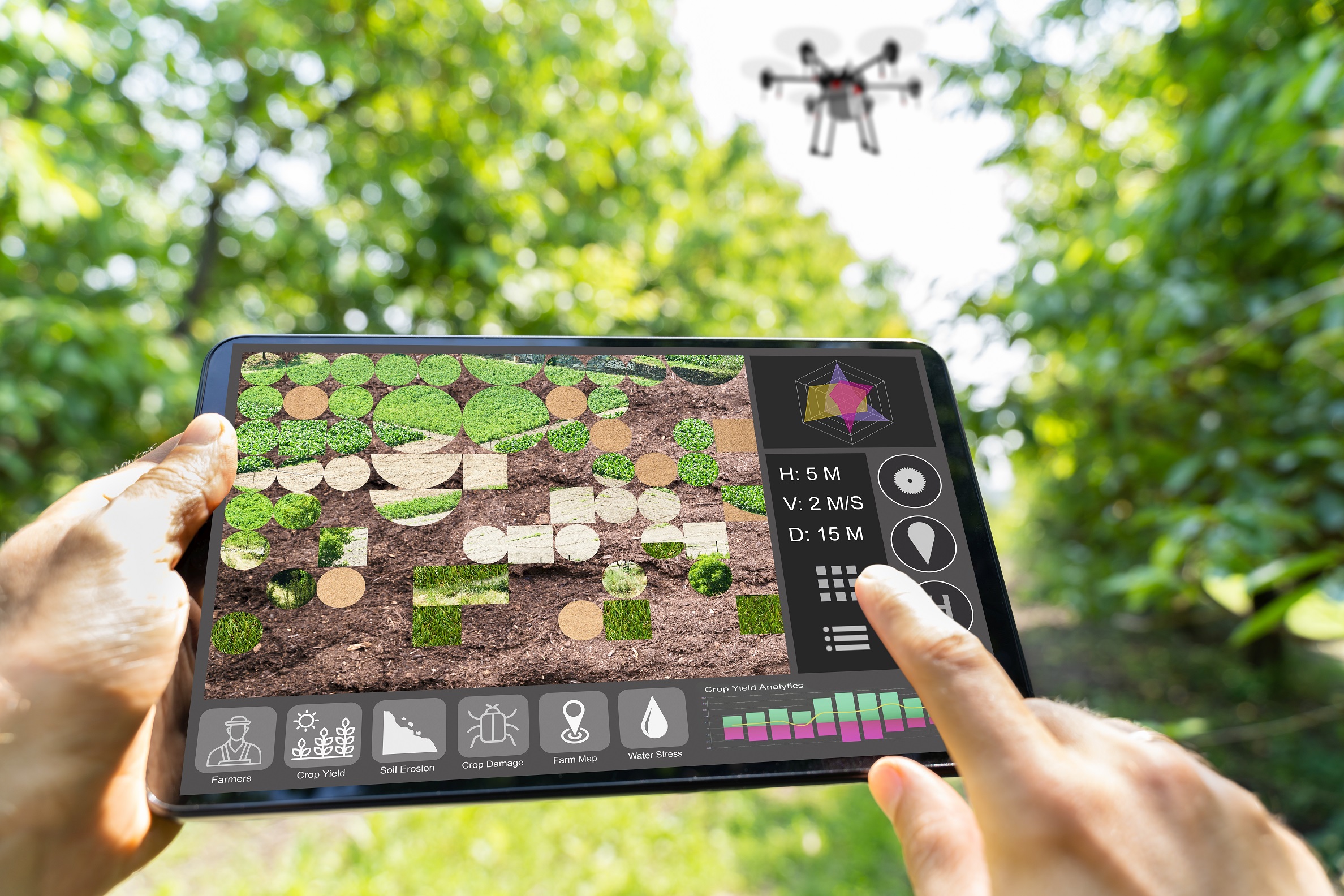Precision farming as it so know, has been in use for decades and today relies heavily on technology, IoT based equipment, software and IT services to produce highly productive farms. The approach started by accessing real-time data about the conditions of the crops, soil and ambient air, along with other relevant information such as hyper-local weather predictions, labor costs and equipment availability. Predictive analytics software uses the data to provide farmers with guidance about crop rotation, optimal planting times, harvesting times and soil management.
Ultimately its the farmers experience that produces the best outcomes but providing real time data is essential for making timely informed decisions is also essential.
IoT Sensors at work in the field
Sensors in fields measure the moisture content and temperature of the soil and surrounding air. Satellites and robotic drones provide farmers with real-time images of individual plants. Information from those images can be processed and integrated with sensor and other data to yield guidance for immediate and future decisions, such as precisely what fields to water and when or where to plant a particular crop.
Agricultural control centers integrate sensor data and imaging input with other data, providing farmers with the ability to identify fields that require treatment and determine the optimum amount of water, fertilizers and pesticides to apply. This helps the farmer avoid wasting resources and prevent run-off, ensuring that the soil has just the right amount of nutrients for optimum health, while also reducing costs and controlling the farm’s environmental impact.
In the past, precision agriculture was limited to larger operations which could support the IT infrastructure and other technology resources required to fully implement and benefit from the benefits of precision agriculture. Today, however, Mobile apps, smart sensors, drones and cloud computing makes precision agriculture possible for farming cooperatives and even small family farms.
Soil health the new essential
Soil maps that identify the spatial distribution of soil texture within the fields are being used to produce maps for seed drilling. By managing soil conductivity farmers can now track soil conditions , manage the timing of cash and cover crops, mininse tilling to continually improve soil health and the development of beneficial bacteria to balance soil health in time for seasonal cash crops.
In addition by observing, measuring and responding to variability in crops and seasonality, using maps produced from the soil scanning, the farmer can control seed drill across fields. GPS-controlled tractors provide pin point accuracy allowing farmers to seed over prior years crops increasing soil health and crop yield.
BSI is producing a series of already outdated standards and is now attempting to develop standard (or guidelines) on how these drones could be used for optimizing growth rates, soil conditions and insect infestations. (ISO ISO/TC 20/SC 16, unmanned aircraft systems) lets see how that unfolds.
“By developing standards which provide guidance in what is a very complex situation, these techniques are more likely to become widely disseminated.”BSI group
The key for soil health is choosing the right crop for the soil and season. For example rye grass is a great cover crop after harvest. Resists weeds and development of pests, grows steadily through the winter, rapidly in spring and if you spray it out can be broken down quickly at the end of summer to reintroduce nuitrients into the soil for the next crop.
Monitoring soil health is not an everyday event and more often involves monitoring and preparing for external factors such as fires and floods that cause erosion or introduce pests, than it does monitoring the field itself.
However a modern farmer cannot expect to produce a productive and price competitive crop without the use of IoT and related technologies. It is now a requirement and also a responsibility for the modern farmer to be a responsible host for the resources placed under his or her management.





3 Comments
Riva Collins
Have you created a Virtual App on your platform for precision agriculture yet ?
Obila Doe
The use of drones is amazing, great to see.
Riva Collins
It’s no secret that the digital is booming in agriculture. Most people will be surprised how farming has transitioned to embrace technology in recent years. The modern farmer really need to have a good handle on the science anyway, digital just removes some of the guesswork.